Quality vs Quantity
Hi all!
I was recently refurbishing my card game KingClashers with full-art images. However, some of the new images available to me differed conceptually from the previous ones and I had to redesign a lot of the cards to better match what I had. For example, the previous Bear card now had to become a Boar.
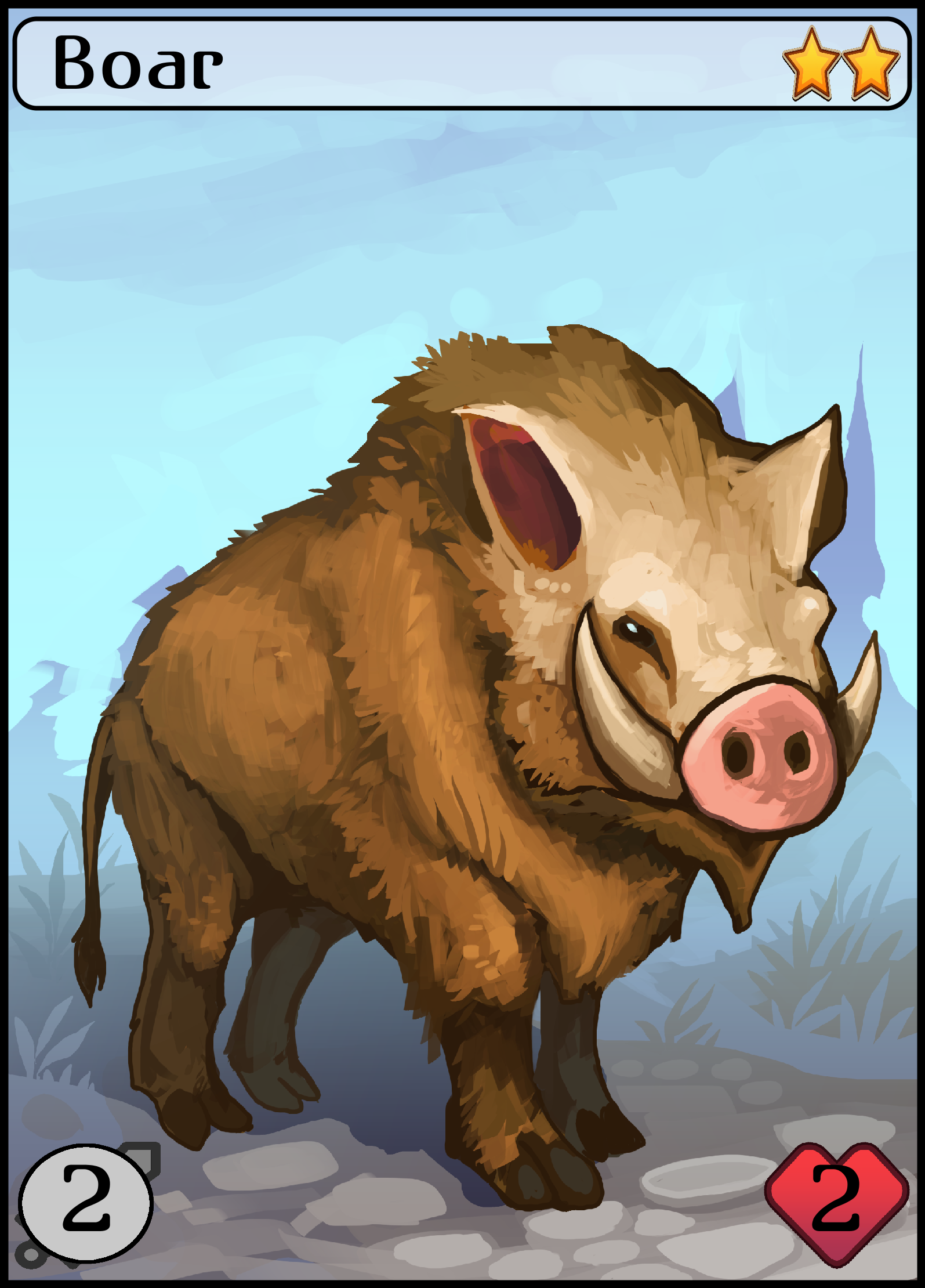
During this process, I discovered that many cards only had some slight differences between them. For example, they had the same abilities but only a little more attack (at the bottom left of the card) at the expense of a little less health (bottom right of the card). For every ability of note there were often three of four cards that were so similar I often had trouble recalling the differences in my mind.
Although this would have been fine if the cards served different purposes, it often did not. What happens often when you have many similar entities in a game is that -inevitably- some would be better than the others for certain strategies. However, when you make many similar cards (the pigeonhole principle dictates that) some of them would be fully overlapping. Then, one is better nearly all the time and the others are sidelined to some fringe role.
Some would argue that this is fine, as the fringe game entities (in my case: cards) are meant to test the player's decision making. However, the point I want to make with this post is that you can still do this without wasting design space. To demonstrate this, I will present a particular example I spent a lot of time on.
As a background, in KingClashers, you select a card each round without knowing what your opponent selected and after both of you are done you make the cards fight each other. The goal is to kill the opponent's King card (which they start the game with) and whenever your hand size drops bellow 4 you draw the extra cards. To balance the power level of stats and effects, most cards have a period in which they can't be played, which is designated on the upper right corner with a number of stars. There is also a deckbuilding restriction that the number of stars and cards in a deck being exactly 14, but that's the gist of it.
A few cards have no delay period. Usually, it's necessary to include some or a lot of them in your deck if you want to play other more powerful cards (so as to balance the number of stars) and this makes them an important aspect of the game. The baseline of this process is the minion.
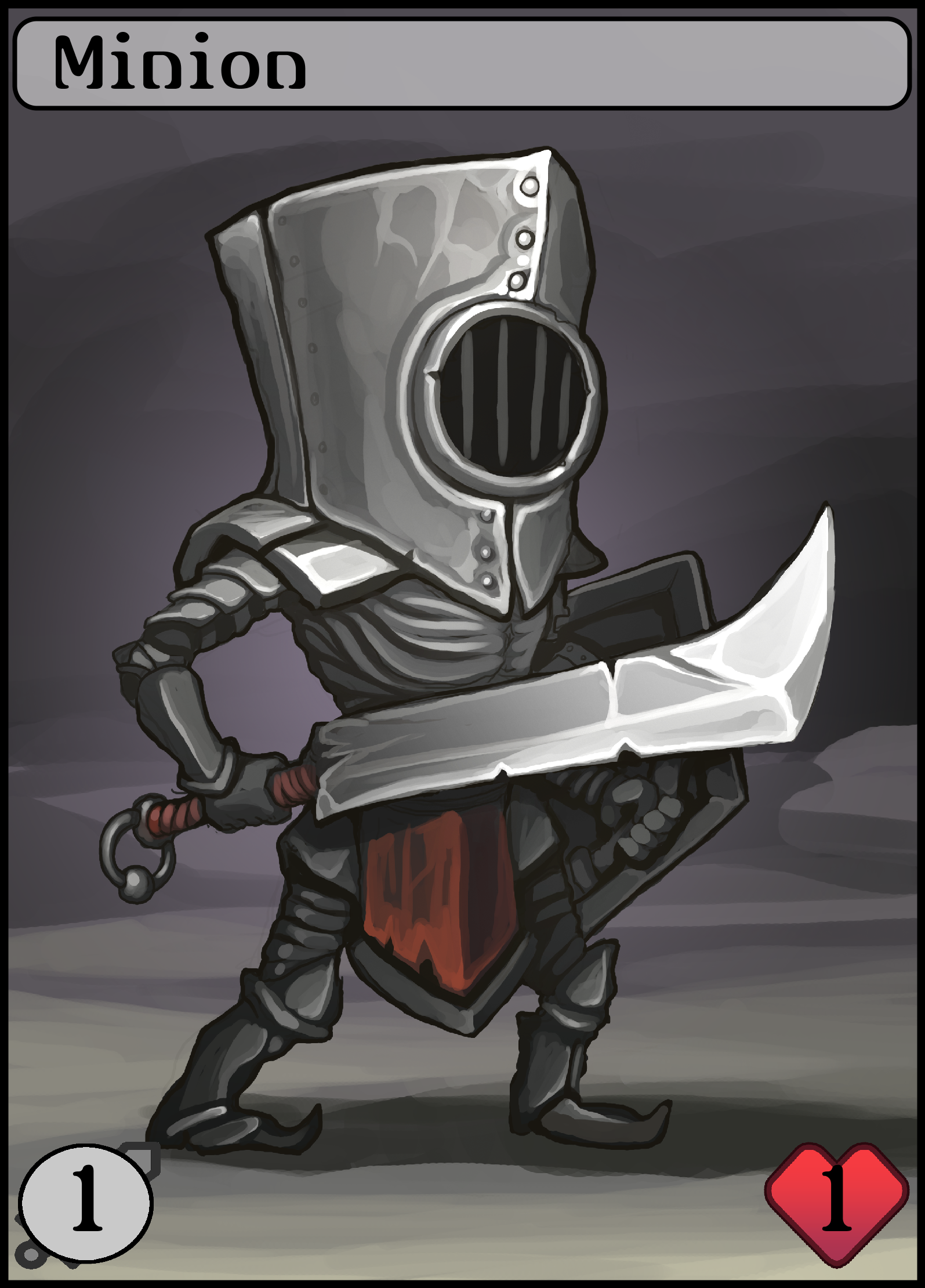
The Minion is supposed to fit in any deck where there's a need for a filler but no other special strategy. Usually, Minions can whittle down or trade with some of the more powerful cards. Then, there also exist three other baseline designs which serve different purposes :
- the Peasant, who gives +2 attack to other peasants when it dies and is hence useful when looking for a high damage output when playing many no-delay cards
- the Frog, which can be damaged by exactly 1 attack (easily killed by small things, more difficult to kill with larger threats)
- the Goblin, whose role is to restrain the other no-delay cards by striking first against them, but which is also really bad against stronger enemies
There exist other cards too at no-delay, but they are often tied to deckbuilding restrictions and I won't mention them here.
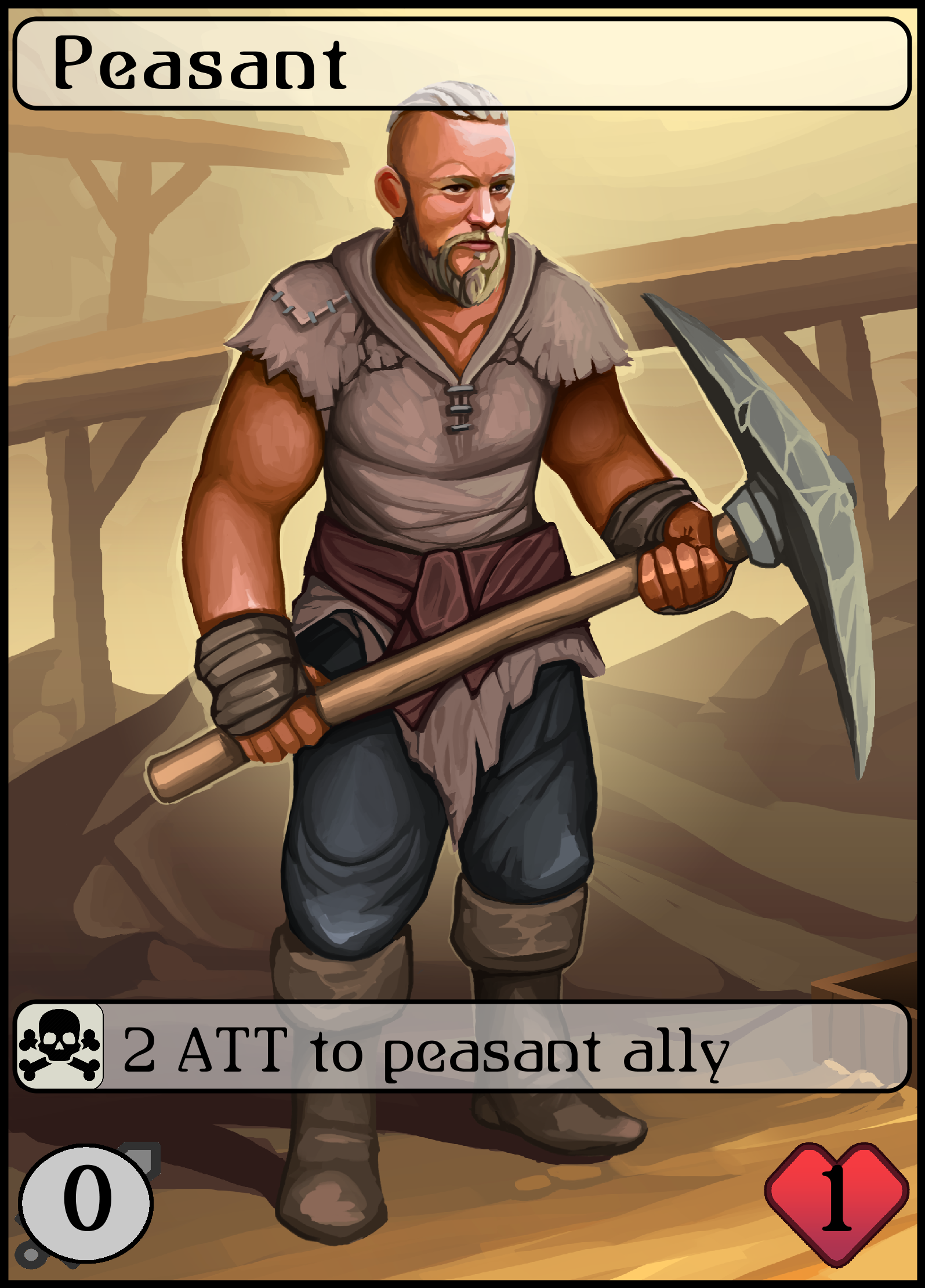
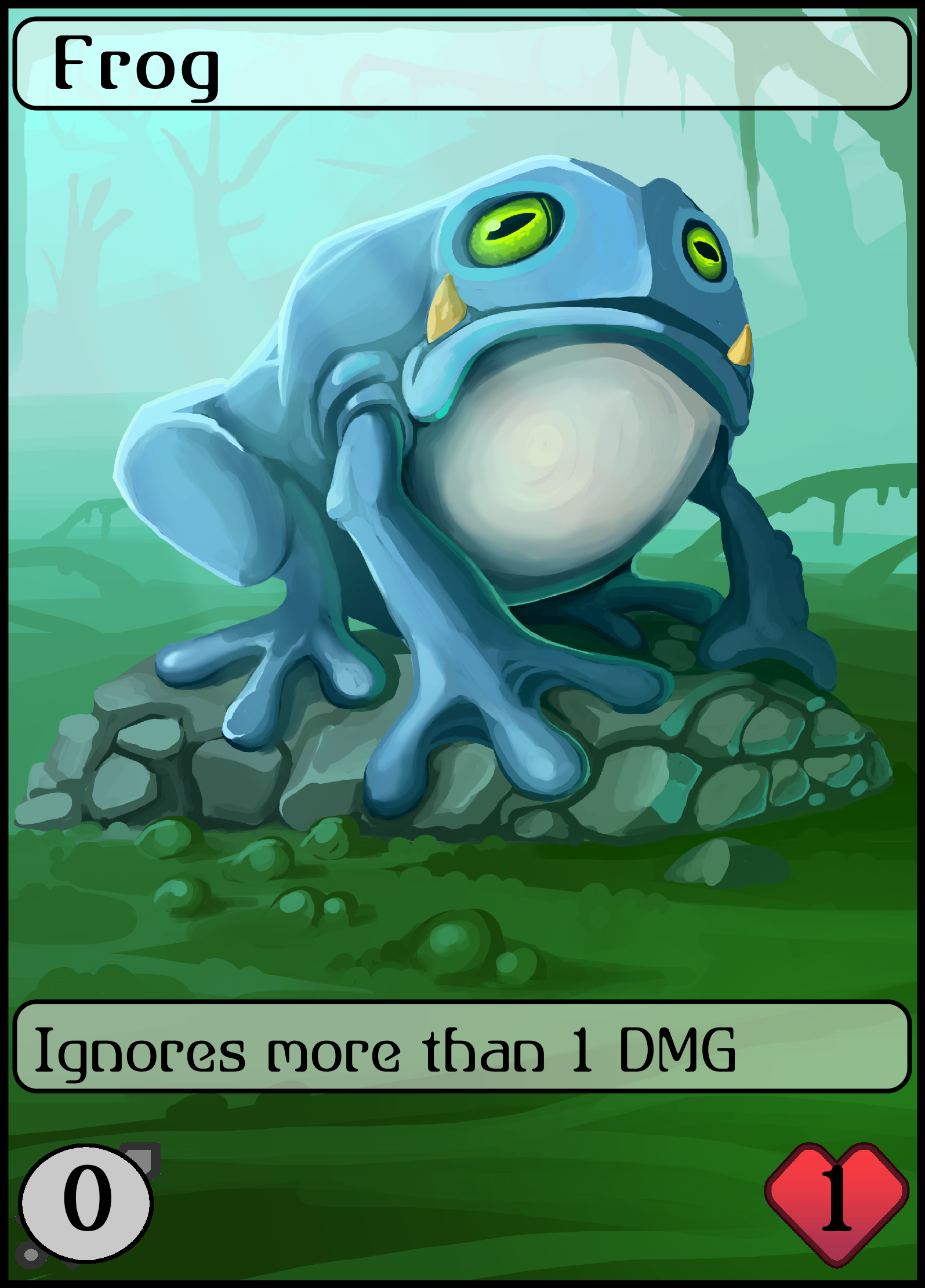
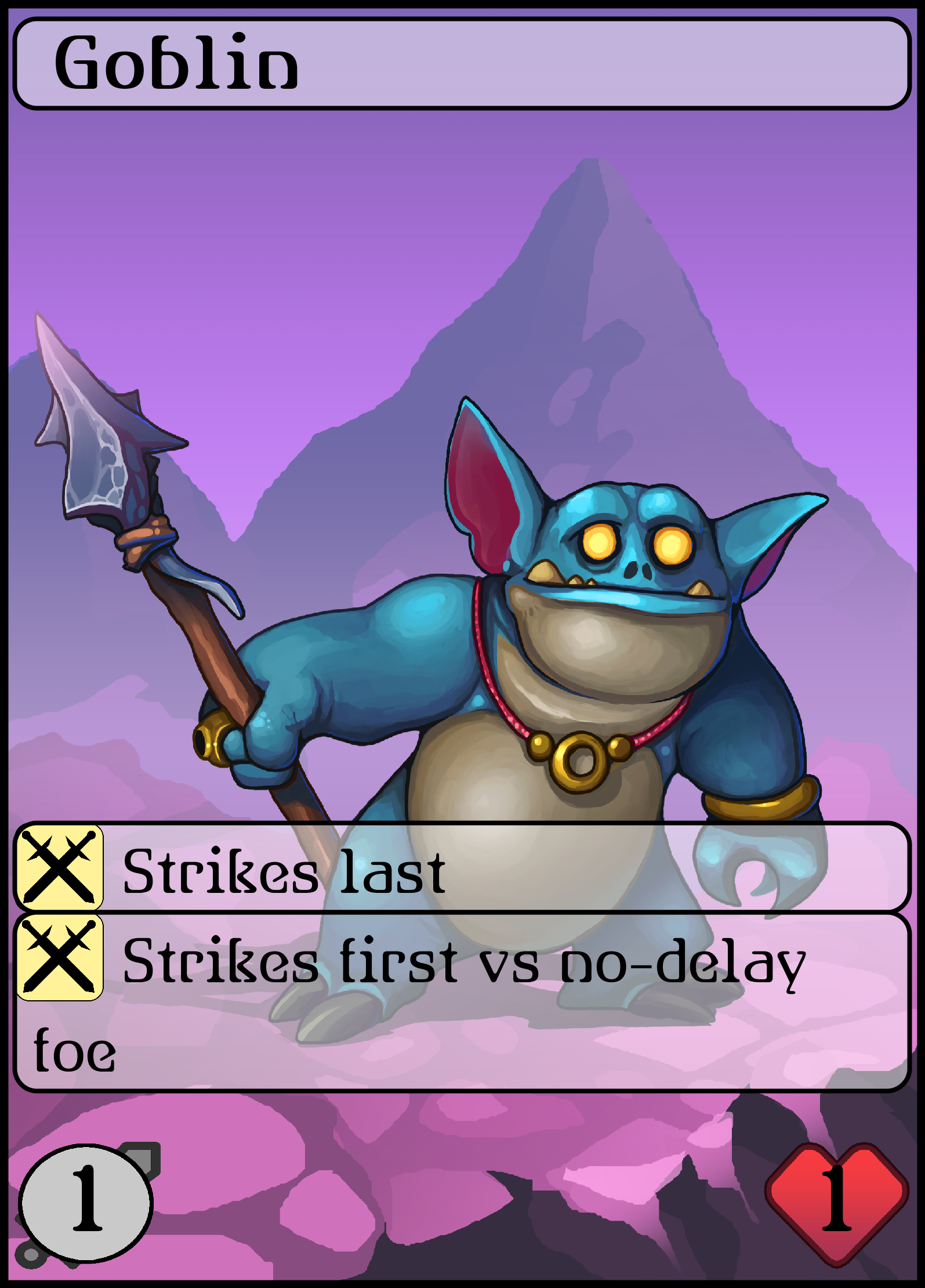
Then, we come to the actual problem card. The Messenger. Originally, the Messenger was just a no-delay card with 0 attack and 2 health. The idea was that you would use Messengers to delay the opponent as your own cards' delay wore off.
The problem of this strategy? If the opponent played a card with two or more attack, the Frog would be better. If the opponent played some card with less attack, it would be better to play a Minion or Peasant, to at least get some damage out of the delaying process. Even worse, if the opponent favored Minions as their no-cooldown cards of choice, then the Messenger would be severely outclassed and the delay of the opponent's cards would also wear off.
When I realized these problems, I went to the decks I'd made over time and, sure enough, I had no Messengers in any strategy. Even if I played cards that dealt damage to their allies, where the two health might prove useful, I'd at worst prefer some Peasants to at least get value out of the death effect. In short, the Messenger was a completely useless card.
At the same time, there was a card called the Trumpet Boy that had 1 attack, 1 health and reduced the delay of an ally by two. That card was awesome! It would fit in any strategy with a lot of powerful cards and essentially fulfilled the role of the Messenger with a minimal downside (it had a delay of only one turn until it could be played again) and while dealing actual damage. Contrary to the Messenger, the Trumpet Boy was the best filler at 1 delay. And it was particularly useful for enabling cards that would remain in delay or started in max delay. Contrary to the messenger and even without taking the increased attack into account, its ability gave the card depth; it made it exiting to play and brew around.
Effectively the problem was that the goal of slowing down the opponent was better achieved by other cards. To make matters worse, there was the Devout Monk that reduced by 4 the delay of angels only (there were 4 different angels and after the changes only 2 remained!) which was also at 1 delay. Overall, even without the Frog, there were three cards with similar roles at similar delays and out of those only the Trumpet Boy was playable in a distinct role.
When I realized this, I immediately went on to merge those cards into a new one. Enter the new version of the Messenger:
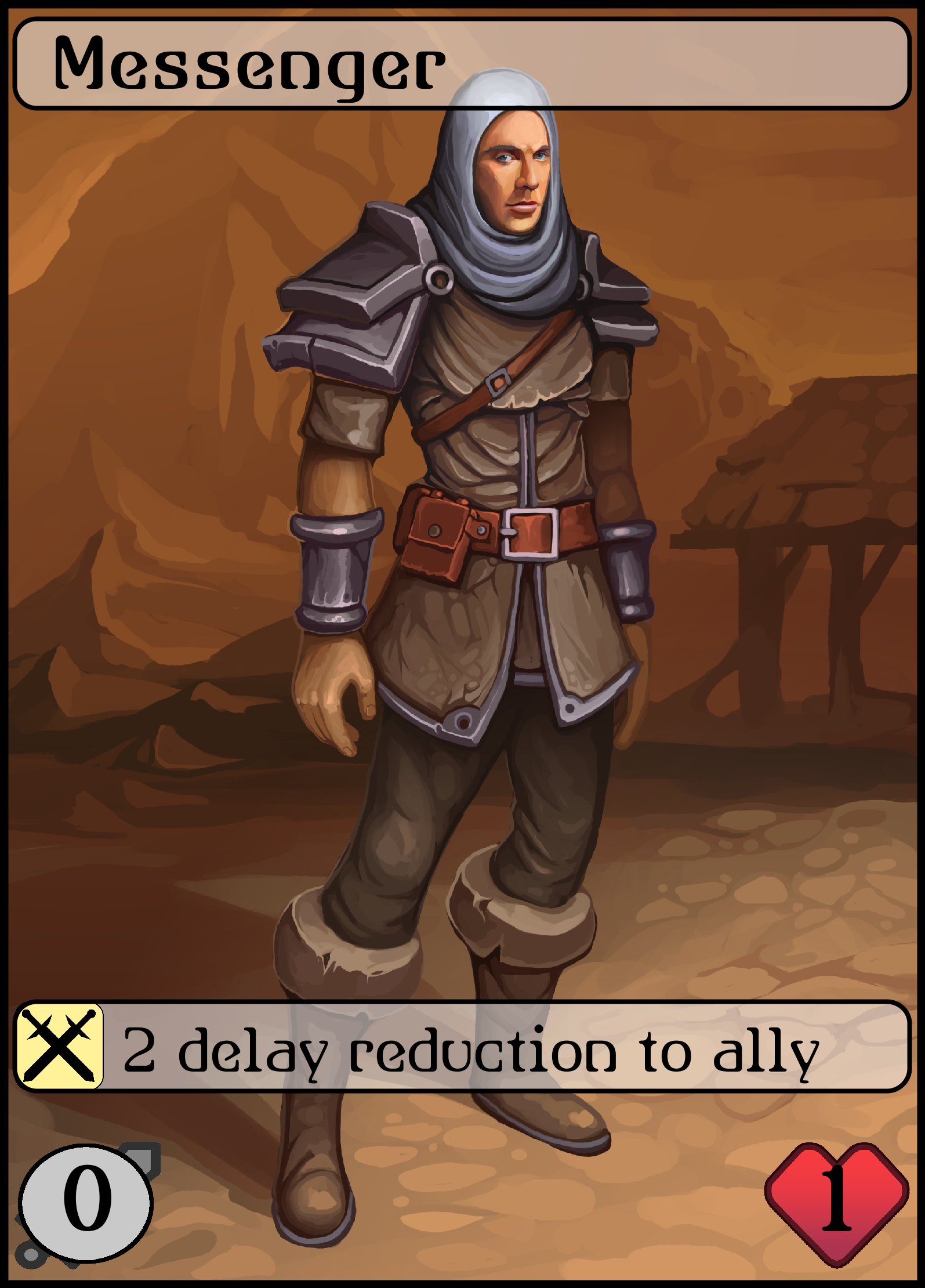
Now this is something worth playing. It has a clear role: supporting cards with high delay. And it doesn't overlap with the effects of other no-delay cards, since it get things to be played again faster than the Frog. The Frog is better against higher attacks, true, but the Messenger is now better than the frog against lower attacks. Then, the player needs to balance out these aspects of the cards to include them.
The takeaway from this story is that you shouldn't design game elements simply for the fun of it; you should understand what these are doing and -more importantly- what these are doing that other game elements aren't. If you miss that point, you might fail to fully utilize the potential engagement and validation a player would feel when choosing between functionally different elements.
Files
Get KingClashers
KingClashers
A simple yet deep card game.
| Status | Released |
| Author | maniospas |
| Genre | Card Game |
| Tags | Fantasy, Fast-Paced, PvP, Singleplayer |
| Languages | English |
More posts
- KingClashers - Beta 5.0Mar 06, 2022
- KingClashers Beta 4.0Nov 05, 2020
- KingClashers Beta 3.5Sep 23, 2020
- Beta 2.2 ChangesApr 09, 2019
- Don't Neglect Fun when BalancingFeb 17, 2019
- Beta 2 ChangesFeb 15, 2019
Leave a comment
Log in with itch.io to leave a comment.